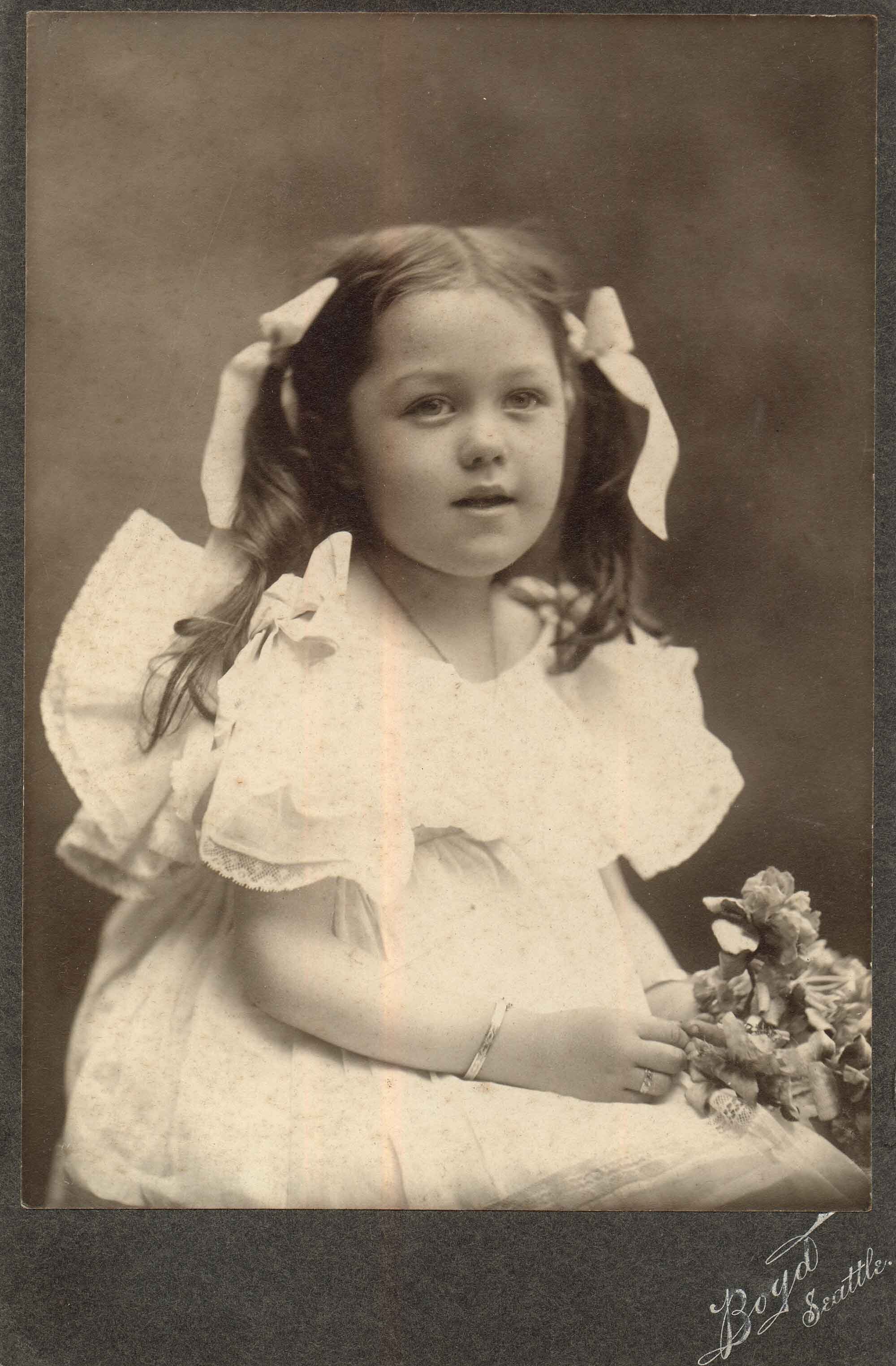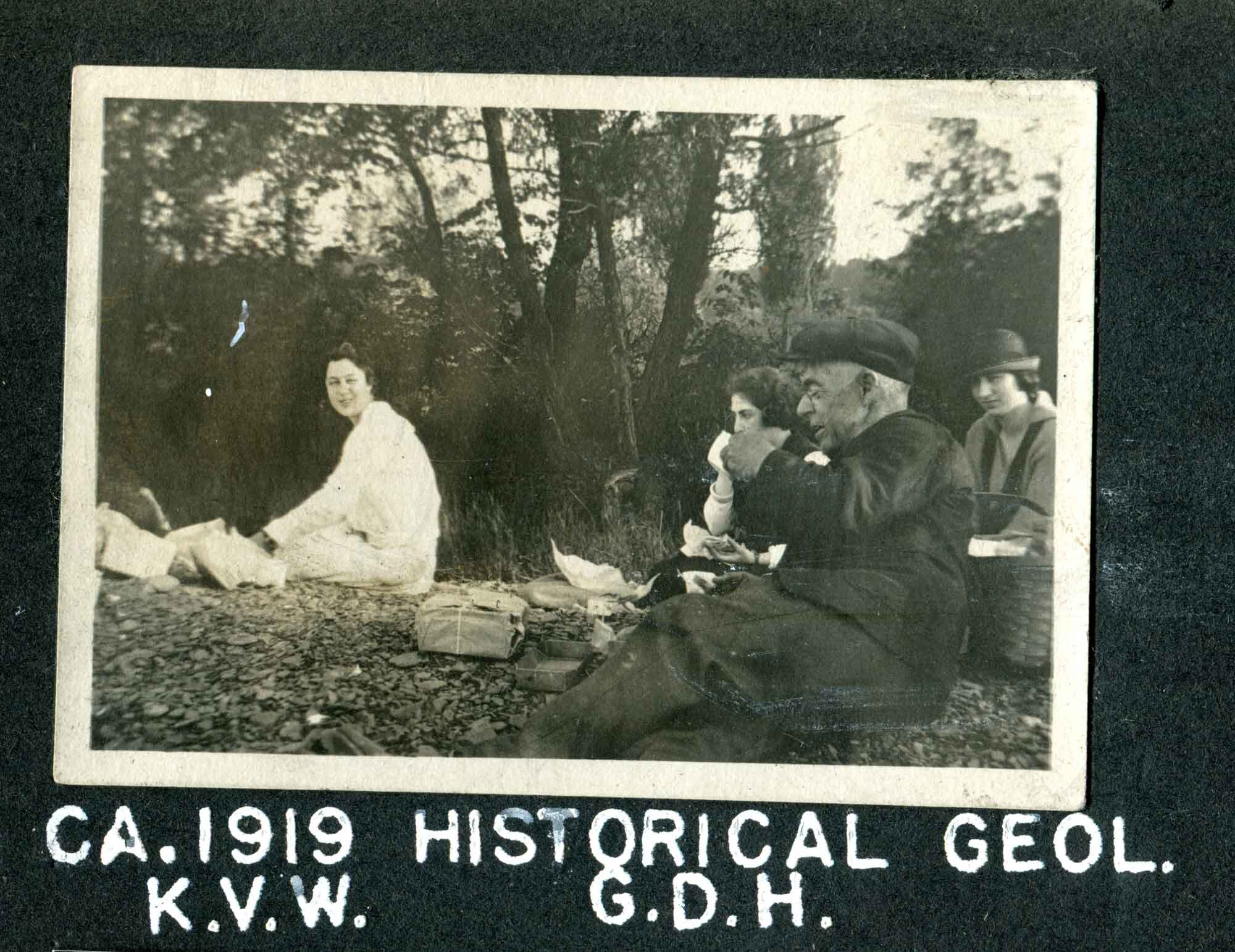Katherine Palmer
Katherine Van Winkle Palmer
Katherine Palmer
1895–1982
Katherine Evangeline Hilton Van Winkle Palmer was a world expert on fossil mollusks from the Cenozoic Era (about 66 million years ago to the present). Katherine was the first woman to receive the Paleontological Society Medal, American paleontology’s highest honor. She was also the second director of the Paleontological Research Institution (PRI).
“The field has broadened and woman geologists, as in other scientific fields, are moving into a diversity of associations and filling prominent positions in the profession with merit. If the interest, ability, and care is inherent, as much or as little as desired can be accomplished by women students in scientific fields, and in particular the departments of geological work.”
— Katherine Palmer (1976) “Role models”
Katherine was born on February 4, 1895, in Washington state. From a very young age she was interested in the rich fossil record of western Washington where she grew up. Even as a child she knew that she wanted to study geology in college and became the first woman from her high school to attend college.
Katherine enrolled at the University of Washington and was mentored by paleontologist Charles Weaver. After finishing her bachelor’s degree, she moved to Ithaca, New York, to pursue graduate work in paleontology with Gilbert Harris at Cornell University. At Cornell, Katherine researched the spectacular Paleogene (about 66 to 23 million years ago) fossil record of the U.S. Gulf Coastal Plain, documenting the incredible diversity of mollusk fossils. She received her Ph.D. in 1925.
In addition to her professional accomplishments, Katherine raised a family, which included taking care of a son whose health was permanently impaired by an early childhood infection. Her husband, Ephraim Laurence “Eph” Palmer (1888–1970), was a professor of Nature Study at Cornell. Katherine and Ephraim formed a close professional partnership, both recognizing the importance of teaching the wider public about nature and science. While Katherine was a professional woman, she also held conservative values:
“She had a strong personality and clever wit, but she was also socially and politically conservative, abjured alcohol, abhorred profanity, and maintained a traditional modesty, signing most of her letters ‘Mrs.’ rather than ‘Dr.’ Palmer.”
— Warren Allmon (2007) The first 75 years. A history of the Paleontological Research Institution
Katherine (ca. 35 years old), her husband Ephraim (“Eph”), and their two children, Lawrence (“Punky,” the older boy) and Richard (far left), early 1930s. Paleontological Research Institution archives.
Katherine served on PRI’s board and was appointed Director in 1952. As Director of PRI, Katherine continued her remarkable research career, publishing on fossil mollusks and invertebrates from around the world. In total, she would go on to produce more than 70 scientific publications, including many major works, during the course of her life. She was recognized among her peers as one of the foremost authorities on Cenozoic mollusk fossils from the United States.
Katherine’s directorship of PRI brought responsibilities in addition to research. One of these responsibilities was becoming the editor of PRI’s scholarly journals Bulletins of American Paleontology and Palaeontographica Americana. In total, she edited around 170 issues of these two journals during her time as Director.
Katherine also led the effort in the late 1960s to move PRI from its original location near the campus of Cornell University to a former orphanage building on Ithaca’s West Hill. The building is now named Palmer Hall in Katherine’s honor. This move was necessary to make more room for PRI’s extensive specimen and library collections. It also presented an opportunity for PRI to share a small portion of its fossil collections with the public for the first time. Because Katherine took time to meet with most visitors (young and old alike) to her “mini museum,” she became known locally as “the fossil lady.” Katherine remained Director of PRI until her retirement in 1978.
Palmer Hall on the campus of the Paleontological Research Institution, Ithaca, New York.
Katherine was one of just a handful of professional women paleontologists in the mid-20th century. In recognition of her expertise and service to the field, she was awarded the Paleontological Society Medal in 1972, the highest honor in American paleontology. She was the first woman to receive this award.
Katherine passed away on September 12, 1982. She is buried in Lake View Cemetery, Ithaca, New York.
“Yours has been a job well done. How many times have . . . I heard Professor Harris say, when speaking of you, ‘they broke the mold after they made her’. You were the ‘son’ he never had; the fulfillment of his paleontologic dream. Would that he were on hand today to know how richly you have kept the faith.“
— Ken Caster (1978), unpublished letter to Katherine Palmer (as quoted in Allmon 2007)
Katherine through the years
Selected works by Katherine Palmer
Harris, G.D., and Palmer, K.V.W. 1946. The Mollusca of the Jackson Eocene of the Mississippi embayment (Sabine River to the Alabama River), Part II. Bulletins of American Paleontology 30: 207–563. Link
Palmer, K.V.W. 1937. The Claibornian Scaphopoda, Gastropoda, and Dibranchiate Cephalopoda of the southern United States. Bulletins of American Paleontology 7, 730 pp. Link
Palmer, K.V.W. 1976. Role models. Pp. 25–28 in S.D. Halsey, B. McCaslin, W.L. Carey, and W.D. Romey, eds. Women in geology. Proceedings of the First Northeastern Women’s Geoscientists Conference, St. Lawrence University, Canton, NY. Monograph No. 5, Department of Geology and Geography, St. Lawrence University.
Palmer, K.V.W., and D.C. Brann. 1965–1966. Catalogue of Paleocene and Eocene Mollusca of the southern and eastern United States, Parts I and II. Bulletins of American Paleontology 48, 1058 pp. Link
Biographical references & further reading
Allmon, W.D. 2007. The first 75 years. A history of the Paleontological Research Institution. Paleontological Research Institution Special Publication no. 29, 135 pp. Link
Brice, W.R. 1989. Cornell geology through the years. Cornell Engineering Histories, vol. 2. College of Engineering, Cornell University, Ithaca, New York.
Brice, W.R. 1996. Gilbert Dennison Harris: a life with fossils. Bulletins of American Paleontology 350, 154 pp. Link
Brice, W.R. 2020. The lady and her fossils: Katherine Van Winkle Palmer (1895–1982). GSA Today, August 2020: 20–21. Link
Caster, K.E. 1973. Presentation of the Paleontological Society Medal to Katherine Van Winkle Palmer. In Paleontological Society records and activities. Journal of Paleontology 47: 599–601. Link
Caster, K.E. 1983. Memorial: Katherine Van Winkle Palmer. In Society records and activities. Journal of Paleontology 57: 1141–1144. Link
Hickman, C.S. 1995. Women in American paleontology. A tribute to Katherine Van Winkle Palmer on the 100th anniversary of her birth. American Paleontologist 3(3): 1–4.
Pruitt, C.M. 1963. Ephraim Laurence Palmer. Science Education 47: 209–220.
Stricker, B. 2017. Daring to dig : Adventures of women in American paleontology. PRI Special Publication No. 54. Paleontological Research Institution, Ithaca, New York.















